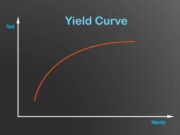Definition
Keogh plans are a type of retirement plan for self-employed people and small businesses in the United States.
Keogh Plan
What is the ‘Keogh Plan’
A Keogh plan is a tax-deferred pension plan available to self-employed individuals or unincorporated businesses for retirement purposes. A Keogh plan can be set up as either a defined-benefit or defined-contribution plan, although most plans are defined as contributions. Contributions are generally tax deductible up to a certain percentage of annual income with applicable absolute limits in U.S. dollar terms, which can be changed from year to year by the U.S. Internal Revenue Service (IRS).
Explaining ‘Keogh Plan’
Keogh plans represent retirement plans for self-employed people and unincorporated businesses, such as sole proprietorship and partnerships. If an individual is an independent contractor, he cannot set up and use a Keogh plan for retirement.
Qualified Defined-Contribution Plans
Keogh plans can be set up as qualified defined-contribution plans, in which the contributions are made on a regular basis up to a limit. Profit-sharing plans are one of the two types of Keogh plans that allow a business to contribute up to 25% of compensation or $53,000 in 2016. A business does not have to generate profits to set aside money for this type of plan.
Qualified Defined-Benefit Plans
Qualified defined-benefit plans state the annual benefits to be received at retirement, and these benefits are typically based on salary and years of employment. Contributions towards defined-benefit Keogh plans are based on stated benefits and other factors, such as age and expected returns on plan assets. The IRS stated that in 2016, the maximum annual benefit is set at $210,000 or 100% of the employee’s compensation, whichever is lower.
Advantages and Disadvantages of Keogh Plans
Keogh plans were established through legislation by Congress in 1962 and were spearheaded by Rep. Eugene Keogh. As with other qualified retirement accounts, funds can be accessed as early as age 59.5, and withdrawals must begin by age 70.5.
Keogh Plan FAQ
How much can you put in a Keogh plan?
Who is subject to Keogh plan rules?
When can you withdraw from a Keogh plan?
Are contributions to Keogh plan deductible?
Who Cannot participate in a Keogh plan?
How is Keogh contribution calculated?
Further Reading
- Hierarchical financial needs reflected by household financial asset shares – link.springer.com [PDF]
- Patterns of household financial asset ownership – digitalcommons.uri.edu [PDF]
- Property market efficiency: an institutional economics perspective – journals.sagepub.com [PDF]
- KEOGH retirement plans – mospace.umsystem.edu [PDF]
- DEFINITION AND MEASUREMENT OF TAX EXPENDITURES: A CASE STUDY OF THE DISABILITY INCOME EXCLUSION AND KEOGH PLAN CONTRIBUTIONS … – elibrary.ru [PDF]
- Household financial management: The connection between knowledge and behavior – heinonline.org [PDF]
- Individual account retirement plans: An analysis of the 2007 survey of consumer finances, with market adjustments to June 2009 – papers.ssrn.com [PDF]
- Estimating the economic impact of pandemic influenza: an application of the computable general equilibrium model to the UK – www.sciencedirect.com [PDF]


































